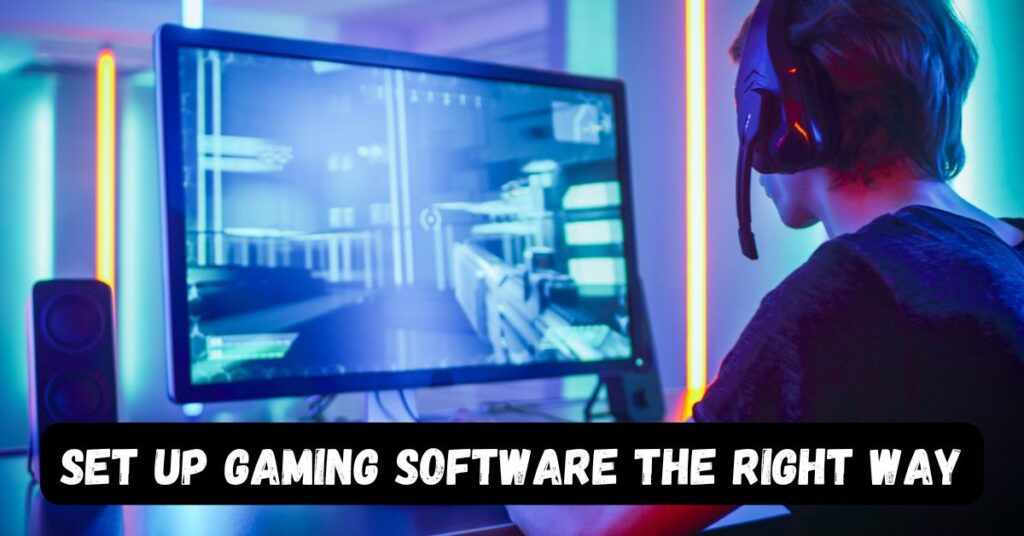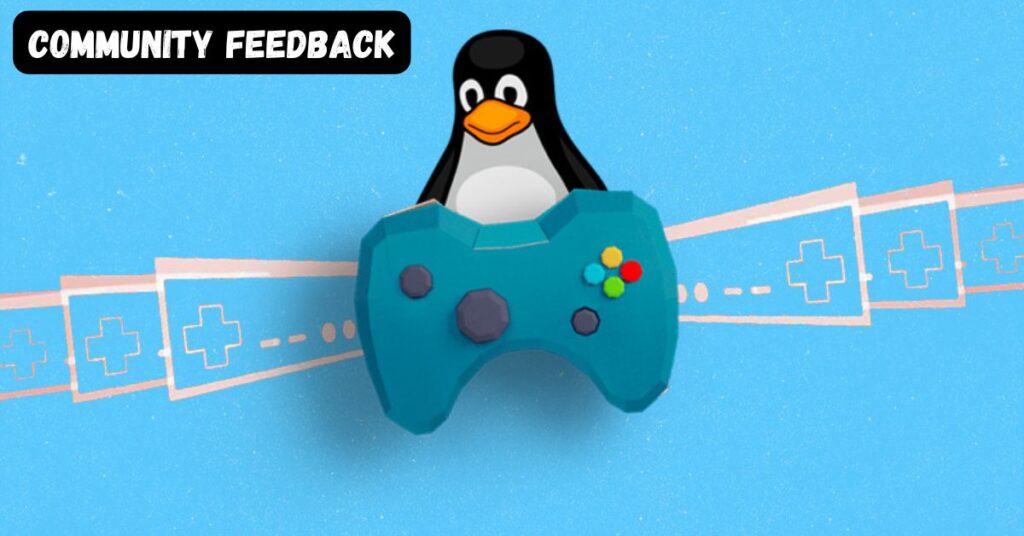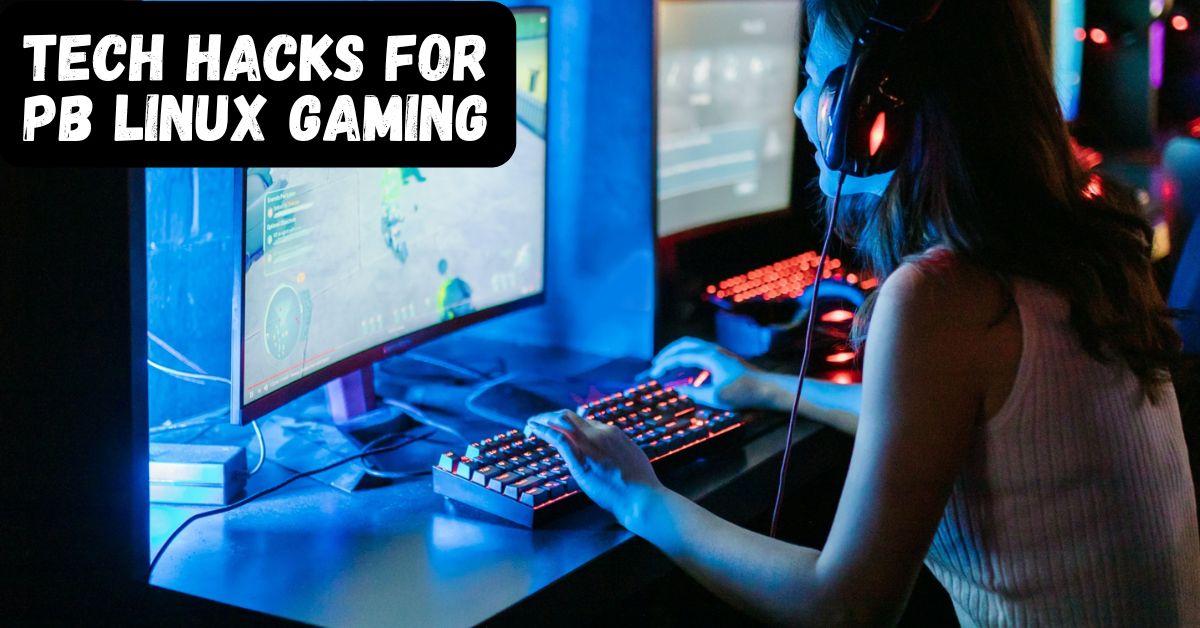Gaming on Linux has evolved tremendously over the years. PB Linux is now a viable option for serious gamers who want control and flexibility. Many gamers face performance issues that can be fixed with simple tweaks. This comprehensive guide shares practical tech hacks to enhance your PB Linux gaming experience.
These optimization techniques will help you achieve smoother gameplay without expensive hardware upgrades. Let’s dive into the world of Linux gaming optimization and discover how to maximize your system’s potential.
1. Optimize Your System for Gaming
Your base system configuration directly impacts gaming performance. Default Linux kernels prioritize stability over speed. Gaming-focused kernels like XanMod offer significant frame rate improvements. Installation takes just one command in your terminal. The system optimization process should always start with updating your graphics drivers. NVIDIA users should use the proprietary drivers for best results.
AMD users generally get excellent performance from open-source options. Intel integrated graphics users should regularly check for driver updates. Gaming mode tools automatically adjust your system when you launch games. GameMode by Feral Interactive temporarily changes CPU scaling and I/O priorities. This improves frame rate without manual tweaking for each gaming session.
Adding simple launch options to Steam games activates these performance boosts instantly. Low-latency audio configurations prevent sound delays during intense gaming moments. Compositor settings can reduce screen tearing without adding input lag. Memory management tweaks ensure your games have priority access to RAM resources. Filesystem optimizations reduce loading times in open-world games. Temporary file management prevents stuttering during extended play sessions.
2. Set Up Gaming Software the Right Way
Proton has revolutionized Linux gaming by making Windows games playable. The default Steam Proton works well but custom versions offer better Proton compatibility. ProtonGE includes patches for popular games that don’t work with standard versions. Installing it through ProtonUp-Qt simplifies the management of different Proton versions.

Wine remains essential for games from non-Steam platforms. The Wine gaming setup should include DXVK for DirectX to Vulkan translation. This drastically improves performance in DirectX-heavy titles. Lutris provides a user-friendly interface for managing non-Steam games.
It includes optimized installation scripts for popular games. Bottles offers a more compartmentalized approach to Wine configuration. Proper Vulkan implementation improves performance across both native and Windows games. Ensure your system has all necessary Vulkan packages installed. Controller configuration tools make gamepad setup seamless across different games.
3. Boost FPS with Simple Tweaks
In-game settings have the most direct impact on performance. Shadows and lighting effects are particularly demanding on GPUs. Reducing these settings first can provide immediate FPS improvements on Linux. Anti-aliasing techniques vary in their performance impact. FXAA is generally less demanding than MSAA or SSAA. Texture quality affects both visual fidelity and VRAM usage.
Medium textures often provide a good balance for most systems. View distance settings can dramatically affect open-world game performance.Screen tearing disrupts visual fluidity during fast-paced gameplay. Enabling VSync helps but may introduce input lag. Adaptive sync technologies like FreeSync or G-Sync offer better solutions. GPU overclocking can provide additional performance headroom for demanding games.
Tools like CoreCtrl for AMD or GreenWithEnvy for NVIDIA simplify the overclock GPU Linux process. CPU governor settings affect how your processor responds to gaming workloads. The performance governor maximizes clock speeds but increases power consumption. Game-specific profiles can save optimal settings for different titles.
Resolution scaling offers a middle ground between performance and visual quality. Lower resolutions significantly boost frame rates on older hardware. Disabling unnecessary visual effects often provides performance gains with minimal visual impact.
4. Fix Common Gaming Problems
Network latency can ruin multiplayer gaming experiences. Wired connections provide more stable latency reduction than WiFi. Quality of Service settings on your router can prioritize gaming traffic. Game crashes often stem from compatibility issues with certain Proton versions.
Checking ProtonDB provides community solutions for specific games. Audio problems frequently plague Linux gaming setups. PulseAudio configuration tweaks can resolve most sound issues. Missing dependencies cause many games to fail at launch. Steam’s Verify Game Files feature can fix corrupted game installations.
Controller detection issues can be addressed through Steam Input configuration. Some games perform better with specific filesystem optimizations. Case-sensitive filesystem issues can prevent certain Windows games from running properly. Environment variables often solve game-specific problems. PROTON_NO_ESYNC can fix stuttering in CPU-bound games.
5. Use PB Linux Gaming Community Tools
The Linux gaming community develops specialized tools for performance enhancement. MangoHud provides customizable performance overlays during gameplay. GOverlay offers a graphical interface for configuring various performance tools. Custom gaming scripts automate optimization processes with a single command. ProtonTricks allows Windows-specific tweaks for problematic games. Game-specific community patches fix issues developers haven’t addressed.
The PB Linux forums contain valuable tips for specific hardware configurations. Discord communities provide real-time troubleshooting assistance. Reddit groups share performance tweaks for newly released titles. Community-maintained compatibility databases help identify game-specific settings. Custom kernel compilation guides explain advanced optimization techniques.
READ THIS BLOG: Unlocking the Spiritual Meaning of the Upside Down Crescent Moon
GitHub repositories host specialized tools for niche gaming problems. Distribution-specific optimization guides address unique package configurations. Hardware-specific communities share tweaks for particular GPU models. Checking these resources regularly keeps your gaming setup current with latest developments. Community benchmarks help compare your performance with similar systems.
6. Keep Your System Clean
Regular system maintenance prevents performance degradation over time. Unused packages consume valuable disk space and system resources. The autoremove command cleans up dependencies from previously removed software. Temporary files accumulate during regular system operation. Clearing shader caches occasionally can fix strange rendering issues.

Background services consume resource allocation that could benefit games. Disabling unnecessary startup applications frees memory for gaming. Desktop environments vary significantly in their resource consumption. Lightweight options like XFCE provide more resources for games. Scheduled maintenance tasks should run during non-gaming hours. Disk fragmentation is less problematic on modern filesystems but still relevant.
Regular driver updates ensure compatibility with newer games. Keeping your kernel updated provides security and performance improvements. Package management hygiene prevents dependency conflicts. Configuration file cleanup removes outdated settings. Browser profiles can consume significant resources in the background. System monitoring helps identify resource-hungry applications.
Essential Tools for PB Linux Gaming Performance
Every serious Linux gamer needs certain essential tools. MangoHud displays vital performance metrics during gameplay. CoreCtrl provides comprehensive AMD GPU management. GreenWithEnvy offers similar functionality for NVIDIA users. ProtonUp-Qt simplifies installation of custom Proton versions. GameMode automatically applies system optimizations when gaming.
DXVK translates DirectX calls to Vulkan for better performance. VkBasalt adds post-processing effects to enhance visuals. Mesa-Git provides bleeding-edge graphics driver improvements for AMD and Intel. Lutris simplifies installation of non-Steam games. Wine-Staging includes experimental features for better game compatibility.
The kernel tuning process becomes easier with specialized tools. Xanmod provides gaming-optimized kernel packages. Steam with Proton remains the foundation of Linux gaming. Discord overlay integration helps stay connected while gaming. OBS Studio allows gameplay recording with minimal performance impact.
Custom compositor configurations reduce display latency. Gamepad configuration tools support various controller types. System monitoring utilities help identify performance bottlenecks. File system optimization tools improve game loading times. Community repositories provide access to the latest gaming tools.
Top Optimization Techniques for PB Linux Gaming
The most effective optimization approaches focus on eliminating bottlenecks. CPU governors directly impact how your processor handles gaming loads. The performance governor maximizes clock speeds at the cost of power consumption. Mesa environment variables unlock advanced driver features. RADV_PERFTEST options improve AMD GPU performance in specific scenarios.
Thread scheduling optimizations distribute game workloads more effectively. I/O schedulers affect how quickly games can access disk data. The deadline scheduler often provides best results for gaming workloads.
Gaming drivers optimization significantly impacts overall performance. Using Gamescope provides efficient compositing for gaming. Fsync and Esync patches improve Wine threading performance. Custom Wine builds include game-specific optimizations. Proton experimental features often fix newly released games.
Vulkan-based compatibility layers generally outperform OpenGL alternatives. Gamemode integration in launchers applies optimizations automatically. NVIDIA settings should be configured through nvidia-settings utility.
AMD settings work best through CoreCtrl’s interface. Memory management tweaks prevent swapping during gameplay. Filesystem caching improvements reduce loading stutters. Network protocol optimizations reduce online gaming latency.
Game Compatibility Fixes: Play Windows Games on Linux
Windows games can run surprisingly well on PB Linux with proper setup. Checking ProtonDB provides compatibility ratings and fixes for Steam games. WineHQ AppDB offers similar information for non-Steam titles. Some games require specific Wine versions to function properly. DXVK configuration options solve rendering issues in DirectX games. Winetricks provides access to essential Windows components.
Custom Wine prefixes isolate problematic game configurations. Certain anti-cheat systems still prevent some multiplayer games from running. EAC and BattlEye have limited Linux compatibility despite recent improvements. Visual C++ redistributables often need manual installation through Winetricks. .NET framework requirements vary between games.
ALSO READ THIS BLOG: Master the Grid: The Ultimate Guide to Mashable’s NYT Connections Hints
Registry tweaks occasionally solve specific compatibility issues. 64-bit prefix configurations work best for modern games. Environment variables can force specific graphic API behaviors. Proton Experimental often includes fixes for newly released titles. Input methods may require configuration for proper controller recognition. Compatibility layers continuously improve with community contributions.
Community Feedback: Real Success Stories from PB Linux Gamers
Real users consistently report significant performance gains from these optimizations. One user increased their Cyberpunk 2077 frame rate by 40% with proper graphics settings. Another gamer eliminated stuttering in Elden Ring through filesystem tweaks. A competitive player reduced their input lag in Counter-Strike using compositor configurations.

Many report successful transitions from Windows with minimal performance loss. Gaming on older hardware becomes viable with appropriate optimization techniques. Several users maintain gaming performance databases to track improvements over time. Community benchmarks help identify which tweaks provide greatest benefits. Distribution-specific success stories highlight unique advantages of different setups.
Hardware-specific optimizations show different results across various configurations. Game-specific communities develop targeted solutions for problematic titles. Performance comparison videos demonstrate Linux gaming potential. Cross-platform frame rate comparisons often show Linux gaining ground on Windows. Open source gaming continues to improve through community contributions..
Frequently Asked Questions
How does PB Linux gaming performance compare to Windows?
With proper optimization, many games run at 90-95% of Windows performance. Some titles actually perform better due to lower system overhead and Vulkan implementation.
Can I play anti-cheat protected games on PB Linux?
Some anti-cheat systems now offer Linux compatibility, but support varies by game. Check ProtonDB or the game’s official forums for current compatibility status.
Will overclocking my GPU damage my hardware?
Modern overclocking tools include safety limits, but always monitor temperatures. Small overclocks with proper cooling generally pose minimal risk.
How often should I update my graphics drivers?
Check for updates monthly unless you’re experiencing specific issues. Bleeding-edge drivers offer improvements but occasionally introduce new bugs.
Is a gaming-focused Linux kernel worth installing?
Yes, specialized kernels like XanMod can provide noticeable improvements in frame timing and responsiveness with minimal setup effort.
Conclusion
PB Linux gaming has reached impressive levels of performance and compatibility. With the right optimization techniques, even demanding games run smoothly. The gaming performance improvements available through these tweaks often surprise new Linux gamers. Community tools continue to bridge remaining gaps between Linux and Windows gaming experiences.
Regular maintenance keeps your system running at peak performance over time. Proper software configuration eliminates most compatibility issues. Hardware utilization improves dramatically with targeted optimizations.

SEO expert focused on boosting online visibility and driving organic traffic. Passionate about data analysis, strategy, and the latest digital marketing trends.















